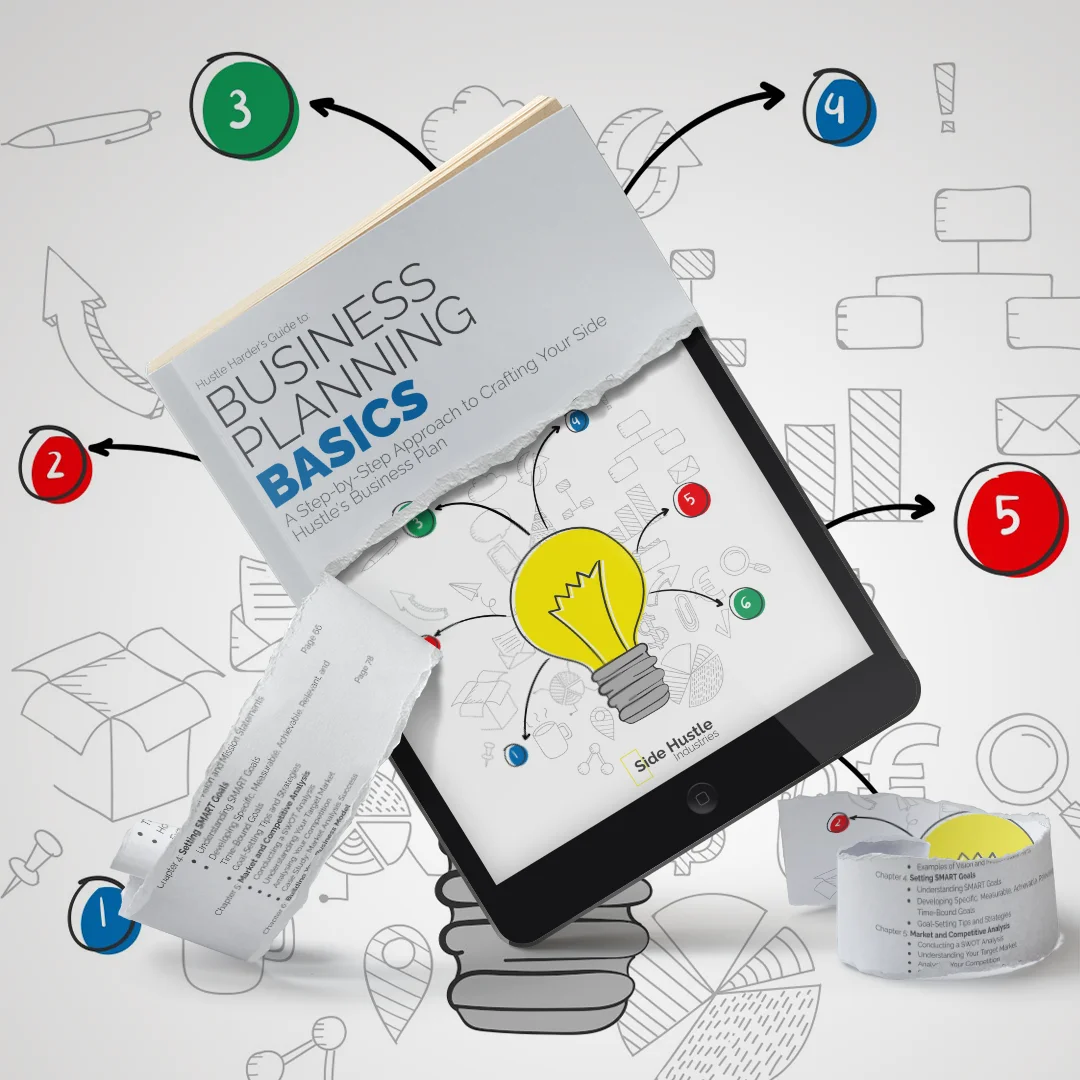
One of the foundational principles of successful entrepreneurship is a deep understanding of your target market. Your target market, often referred to as your ideal customer, is the specific group of people or businesses that your products or services are designed for. By understanding your target market inside and out, you can tailor your marketing strategies, product development, and customer engagement to maximize your chances of success. In this section, we’ll explore the importance of knowing your target market and provide a step-by-step guide to effectively identifying and understanding it.
Why Understanding Your Target Market Matters
Understanding your target market is the cornerstone of effective business planning and marketing. Here’s why it matters:
1. Relevance and Precision:
Knowing your target market allows you to create marketing campaigns, products, and services that are relevant and specific to the needs and preferences of your ideal customers. This precision enhances the likelihood of customer engagement and conversions.
2. Efficient Resource Allocation:
A clear understanding of your target market helps you allocate your resources more efficiently. You can direct your marketing budget, time, and effort toward reaching the people most likely to become customers, reducing waste and increasing return on investment.
3. Competitive Advantage:
Understanding your target market can give you a competitive advantage. When you cater to the unique needs and desires of your ideal customers, you can set yourself apart from competitors and build customer loyalty.
4. Improved Product Development:
By knowing your target market’s preferences and pain points, you can develop products and services that align with their demands. This ensures that you create solutions that genuinely address their problems and challenges.
5. Effective Communication:
Understanding your target market helps you craft marketing messages and content that resonate with your ideal customers. You can speak their language, address their concerns, and offer solutions that matter to them.

Step-by-Step Guide to Understanding Your Target Market
To effectively understand your target market, follow these steps:
1. Define Your Ideal Customer:
Start by creating a detailed description of your ideal customer, also known as a customer persona or buyer persona. This includes demographic information such as age, gender, location, and income. But it goes beyond that. You should also consider their psychographic characteristics, like values, attitudes, interests, and behaviour.
- Demographics: Consider factors like age, gender, location, income, education, and occupation.
- Psychographics: Explore their interests, hobbies, values, and lifestyle choices.
- Challenges and Pain Points: Identify the problems and challenges they face that your products or services can address.
- Goals and Aspirations: Understand their goals and aspirations, both short-term and long-term.
For example, if you’re running a small business selling eco-friendly baby products, your ideal customer persona might be “Eco-conscious Emily,” a 30-year-old mother with a household income of $60,000. She’s concerned about the environment, values natural and non-toxic products for her baby, and aspires to provide the best care for her child.
2. Research Your Market:
Conduct market research to gather data and insights about your target market. This research can be both quantitative and qualitative and may include surveys, interviews, and data analysis. Your goal is to gain a deep understanding of your customers’ needs, preferences, and behaviours.
- Surveys and Questionnaires: Create surveys that ask specific questions related to your products or services. Analyse the responses to identify patterns and trends.
- Customer Interviews: Talk to existing or potential customers to gather in-depth insights into their motivations and pain points.
- Competitor Analysis: Study your competitors to identify gaps in the market and understand how they cater to the same target audience.
3. Segment Your Market:
Not all customers within your target market are the same. They may have varying needs, preferences, and behaviours. Segment your market into distinct groups based on shared characteristics or behaviours. This segmentation helps you tailor your marketing strategies more effectively.
For instance, within the eco-friendly baby product market, you might identify segments such as “First-time Parents,” “Experienced Parents,” and “Health-Conscious Consumers.” Each segment may have different needs and preferences that require specific marketing approaches.
4. Create Customer Personas:
Based on your research and market segmentation, create detailed customer personas for each segment. These personas should be specific, representing the unique characteristics and behaviours of individuals within that group.
- Name Your Personas: Give each persona a name, such as “Sustainable Sarah” for environmentally conscious customers.
- Include Key Details: Include demographic and psychographic details, as well as information on their challenges, goals, and motivations.
- Use Personas for Decision-Making: Whenever you make marketing or product development decisions, refer to your personas to ensure they align with your target audience.
5. Analyse Your Competition:
Study your competitors to gain insights into how they approach the same target market. What strategies do they use? How do they address the needs and preferences of your shared customer base? Identify gaps or areas where you can differentiate yourself.
- Competitor Analysis: Evaluate the strengths and weaknesses of your competitors. What are they doing well, and where do they fall short?
- Differentiation Strategy: Identify ways to set your business apart from competitors.
This may involve offering unique products, better customer service, or more competitive pricing.
6. Stay Current and Adapt:
Market dynamics can change over time. Stay current with industry trends, emerging technologies, and shifts in customer preferences. Regularly revisit your customer personas and market research to adapt to these changes and ensure your strategies remain effective.
Understanding your target market is an ongoing process. By continuously monitoring and adapting to market changes, you can maintain your competitive edge and stay aligned with the evolving needs and preferences of your ideal customers.

Real-Life Example: Understanding the Target Market
Imagine you’re planning to start a local bakery specialising in artisanal bread and pastries. You begin by defining your ideal customer persona:
Persona: Bakery Enthusiast – “Bread Lover Bob”
- Demographics: Male, 35-45 years old, married with children, middle to upper-middle-class, lives in the local community.
- Psychographics: Values high-quality, organic, and locally sourced ingredients. Enjoys baking at home and appreciates the art of bread-making.
- Challenges and Pain Points: Lacks the time and expertise to bake artisanal bread at home. Prefers fresh and unique bread varieties.
- Goals and Aspirations: Aims to provide his family with healthy and delicious bread and pastries. Values a sense of community and connection.
After conducting market research, you discover that there is a demand for locally sourced, organic bread and pastries, especially among individuals who appreciate the art of bread-making but lack the time or expertise. You also find that competitors in the area primarily focus on commercial baked goods and lack the artisanal touch that “Bread Lover Bob” seeks.
With this understanding, you develop a business strategy that emphasizes the use of high-quality, organic ingredients, unique bread varieties, and community engagement. You tailor your marketing efforts to appeal to individuals like “Bread Lover Bob,” creating a niche market that sets your bakery apart from competitors.
Using Target Market Insights in Your Business
The insights gained from understanding your target market can influence various aspects of your business:
- Product Development: Create products that cater to the specific preferences and needs of your target market. In the bakery example, this might involve offering unique bread varieties and organic pastries.
- Marketing and Messaging: Craft marketing messages and campaigns that resonate with your ideal customers. Use language and visuals that appeal to their values and preferences.
- Pricing Strategy: Determine pricing strategies that align with the perceived value of your products or services within your target market.
- Distribution and Location: Choose distribution channels and locations that reach your target market effectively. In the bakery example, this might involve selecting a location in a community with individuals like “Bread Lover Bob.”
- Customer Service and Engagement: Train your team to provide exceptional customer service that aligns with the expectations and values of your target market.
Understanding your target market is not a one-time effort but an ongoing process that evolves with your business and market dynamics. Regularly revisit and refine your understanding to ensure that your business remains relevant and successful in serving your ideal customers.

*Also available on Amazon in Kindle, Soft Cover & Hard Cover formats. —> Click Here.
